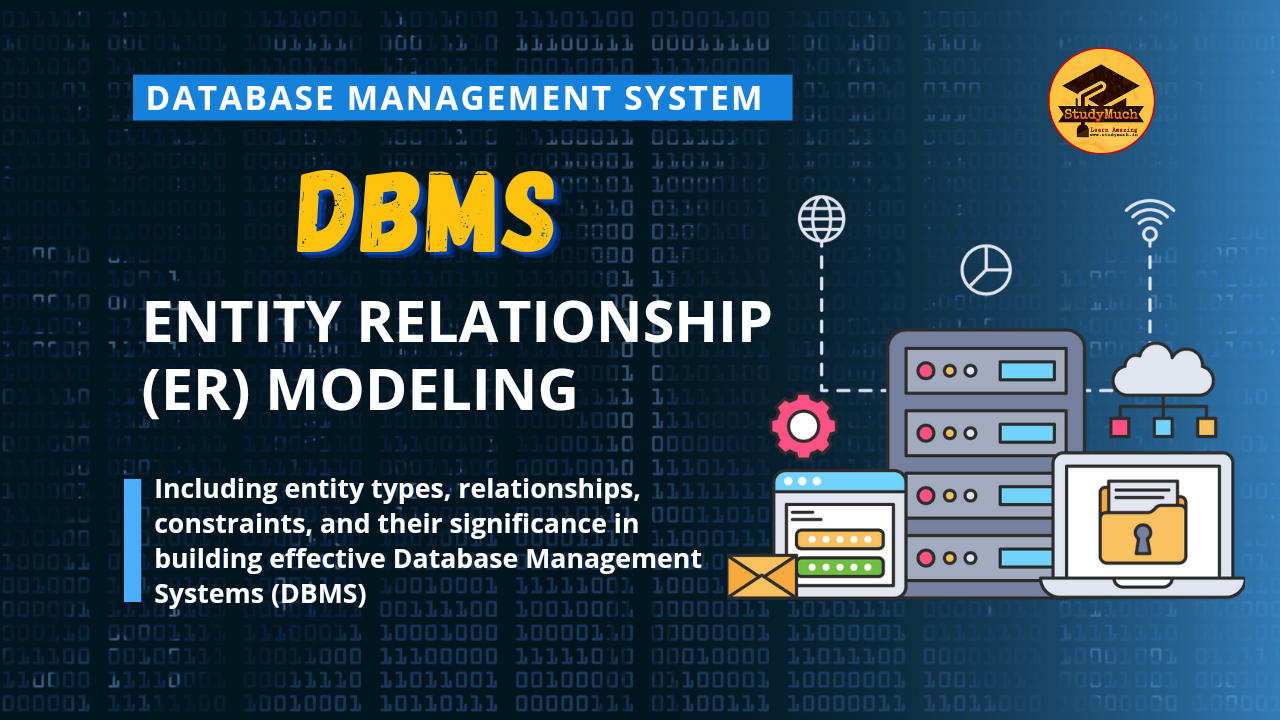Entity Relationship (ER) Modeling

Entity Relationship (ER) Modeling: A Guide to Designing Effective DBMS
In the realm of database management, Entity Relationship (ER) modeling serves as a powerful tool for designing and visualizing database structures. ER modeling allows us to represent the relationships between various entities and establish constraints that govern the behaviour and integrity of the data. In this blog post, we will explore the fundamental concepts of ER modeling, including entity types, relationships, constraints, and their significance in building effective Database Management Systems (DBMS).
Entity Types:
An entity represents a distinct object or concept in the real world that we want to capture and store data about within our database. Entity types are the classes or categories to which these entities belong. For example, in a university database, entity types could include students, courses, professors, and departments. Each entity type is associated with a set of attributes that describe the characteristics or properties of the entities within that type. In the case of students, attributes may include student ID, name, date of birth, and contact information.

Relationships:
Relationships define the associations and dependencies between entity types. They capture how entities of different types are related to each other in the database. There are three fundamental types of relationships:
- One-to-One (1:1) Relationship:
In a one-to-one relationship, each entity in one entity type is associated with exactly one entity in another entity type. For example, in a database for employees and their workstations, each employee would be linked to one specific workstation, and each workstation would be associated with only one employee.
- One-to-Many (1:N) Relationship:
In a one-to-many relationship, an entity in one entity type can be associated with multiple entities in another entity type. However, each entity in the second entity type can only be associated with one entity in the first entity type. For instance, in a database for a bookstore, one author can write multiple books, but each book can have only one author.
- Many-to-Many (M:N) Relationship:
In a many-to-many relationship, multiple entities in one entity type can be associated with multiple entities in another entity type. This type of relationship requires an intermediary entity, known as an associative entity or junction table, to represent the associations. For example, in a database for students and courses, each student can enroll in multiple courses, and each course can have multiple students. The enrollment table serves as the associative entity linking students and courses.
Constraints:
Constraints ensure the integrity and validity of the data stored in a database. Here are some common types of constraints in ER Modeling:
Primary Key (PK) Constraint:
A primary key uniquely identifies each entity within an entity type. It ensures that there are no duplicate entries and provides a unique identifier for referencing the entity. For example, in a student entity type, the student ID attribute can be designated as the primary key.
Foreign Key (FK) Constraint:
A foreign key establishes a relationship between two entity types. It references the primary key of another entity type, creating a link between them. Foreign keys ensure referential integrity and maintain the integrity of the relationships between entities.
Unique Constraint:
A unique constraint ensures that a particular attribute or combination of attributes has unique values within an entity type. It prevents duplicate data from being entered and helps maintain data consistency.
Not Null Constraint:
A not null constraint ensures that an attribute cannot have a null (empty) value. It enforces the requirement for mandatory data entry and helps maintain data completeness.
Conclusion:
Entity Relationship (ER) modeling provides a systematic approach to designing effective Database Management Systems (DBMS). By visualizing entity types, relationships, and constraints, ER models enable us to create structured and well-organized databases. With a clear understanding of entity types and their attributes, relationships, and constraints, we can ensure data integrity, enforce business rules, and establish efficient data retrieval and manipulation processes. By leveraging ER modeling techniques, we can build robust and scalable database systems that meet the evolving needs of modern applications and organizations.
Learn More;


0 Comments